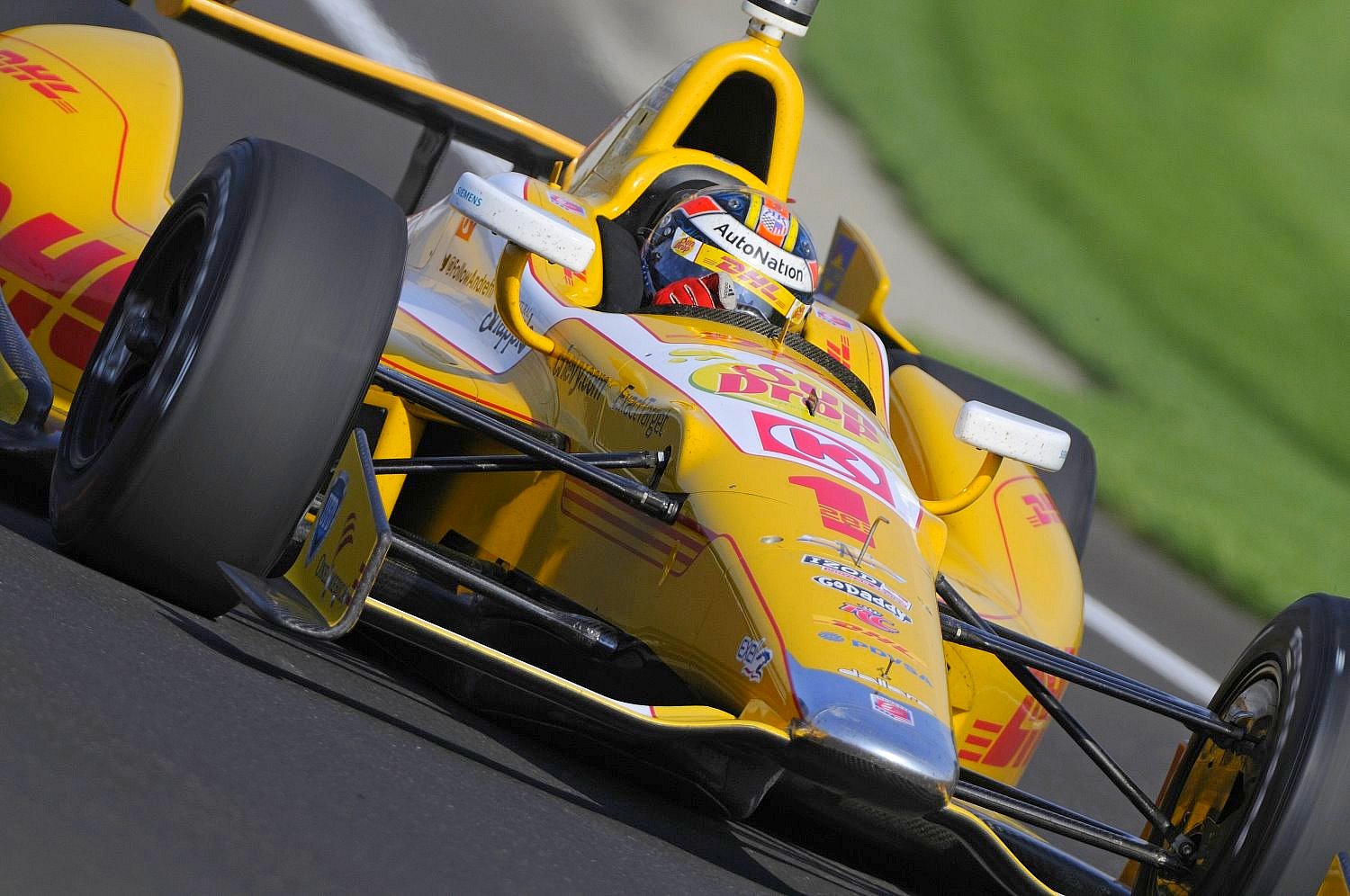Cheaters prosper in IndyCar too, Penske team denies advantage
“Obviously we are very disappointed that the No. 3 car did not pass post-race inspection after Saturday’s race at Texas. The rule in question (14.6.6.14) states that the diffuser exit must measure 7.600." After the race, ours was 7.575" because we neglected to tighten the braces that position the rear of the diffuser following pre-race inspection. The way Helio’s car raced did not provide any advantage as a lower diffuser height actually adds drag and reduces downforce. To ensure this is the case, we ran this configuration in the wind tunnel on Monday morning and found that the No. 3 car actually raced with three pounds less downforce and one pound more drag than what it would have had if we tightened the underwing braces properly."
06/11/13
 |
| The real winner in Texas should have been Ryan Hunter-Reay given the Castroneves car was illegal and generating more downforce than everyone else |
We have hammered NASCAR on this very point, so to be fair, now it is time to hammer IndyCar. It appears you can now cheat in IndyCar, win every race, and come away being champion. You may lose some prize money, but the record books will forever show you as the winner.
Team Penske and driver Helio Castroneves were the big winners in Texas on Saturday night. But that victory–the team's first of 2013–was tainted on Tuesday when the IndyCar Series released a bulletin announcing Castroneves' car spent the night at Texas Motor Speedway racing with the rear of its underwing out of specification.
Rule 14.6.6.14, which states "The exit of the underwing height is 7.600 inches with a tolerance of plus 0.050 inches and minus 0.000 inches" was violated by an unspecified amount.
The infraction was met with a slap on the wrist by the series. Castroneves was allowed to keep his win and did not lose any points. The Penske team, however, was fined $35,000 and lost 15 entrant points.
The value of running with the tunnel exits higher than permitted is certainly an advantage, according to one veteran engineer I spoke with.
"If you alter that exit height–if you raise it–you can definitely pick up extra downforce," he said. "There's a reason they define its height very tightly. Move it up even a little bit, and there's definitely a performance gain to be had."
On a night where the entire field struggled mightily with insufficient downforce and tires that degraded heavily towards the end of a stint, Castroneves' AAA-sponsored No. 3 entry was the only car capable of overcoming those limitations.
Running markedly faster than the competition, and also able to use a higher lane to motor past his rivals, the Penske driver looked like he was on rails, lapping all the way up through sixth place. In part from Speedtv.com
